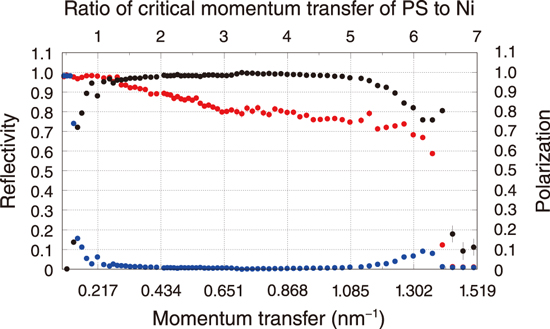
Fig.5-7 Measured and simulated polarized neutron off-specular scattering images of Fe/Ge multilayers

Fig.5-8 Polarized neutron reflectivity profiles of the polarizing supermirror (PS) fabricated in this study
Polarized neutron scattering is a powerful and nondestructive technique to observe the correlation of small magnetic objects in a sample as neutrons with spin 1/2 are sensitive to magnetic moments in materials. To contribute to the science using polarized neutrons intensively conducted in the J-PARC MLF, we developed a high-performance neutron polarizing supermirror (PS), which is a neutron optical device used to polarize a neutron beam. The PS comprises a stack of alternating layers of ferromagnetic (FM) and nonmagnetic materials with a variation in bilayer thickness to extend the bandwidth, which is the wavelength range of the neutron polarization. Extension of the PS bandwidth is especially important for a spallation neutron source such as the J-PARC MLF, which provides a pulsed neutron beam with a broad neutron wavelength range. The critical momentum transfer of the PS defining the bandwidth is, however, limited to five times that of Ni. This is because a sputtered magnetic multilayer with a bilayer thickness less than 6 nm, which is required to realize critical momentum transfer larger than five times that of Ni, usually loses its spontaneous magnetization due to the Curie temperature becoming less than the room temperature.
The polarized neutron off-specular measurement performed using the polarized neutron reflectometer BL17 at the MLF revealed that the Fe/Ge multilayer used for the PS forms an FM–interlayer exchange coupling between neighboring Fe layers when the Ge thickness is less than 2 nm (see Fig.5-7). This coupling contributes to a stable spontaneous magnetization comparable to the bulk and soft magnetic properties even though the bilayer thickness is less than 6 nm. The performance test of the PS consisting of 10436 layers and a total thickness of 32 μm based on the above findings revealed a critical momentum transfer greater than six (see Fig.5-8)-the highest critical momentum transfer recorded worldwide as of May 2022.
The bandwidth extension achieved in this study is not sufficient to cover the full spectrum available at the MLF. The origin of the magnetic interlayer exchange coupling across a semiconductor spacer has not been fully understood. Further study on this point is needed to improve the performance of the PS and to promote the science using polarized neutrons.
This study was supported in part by JSPS KAKENHI Grant-in-Aid for Scientific Research (C) (JP19K12647).
(Ryuji Maruyama)